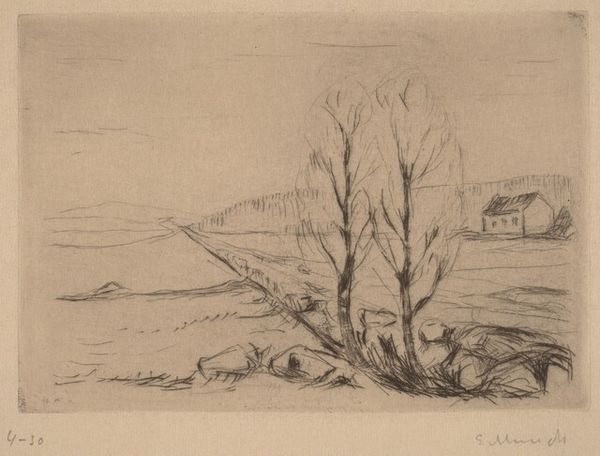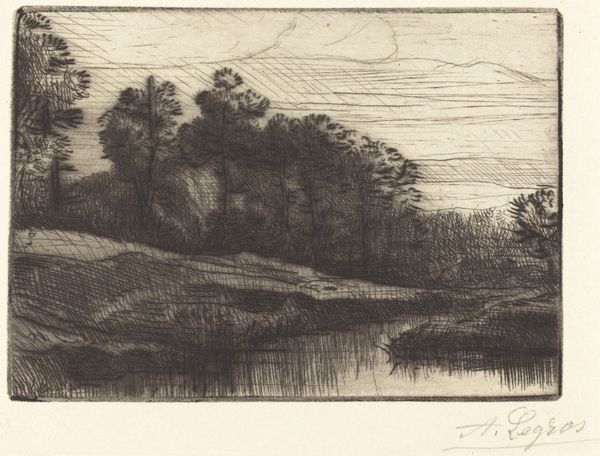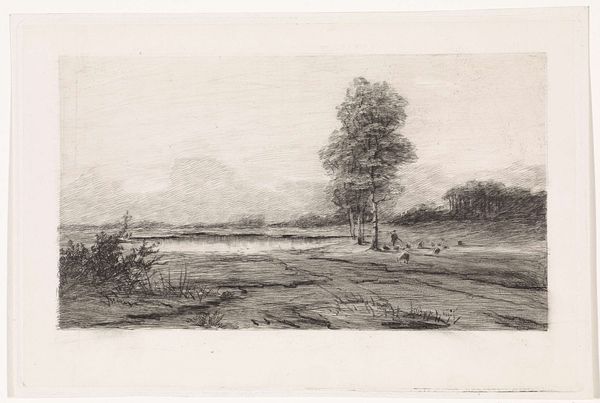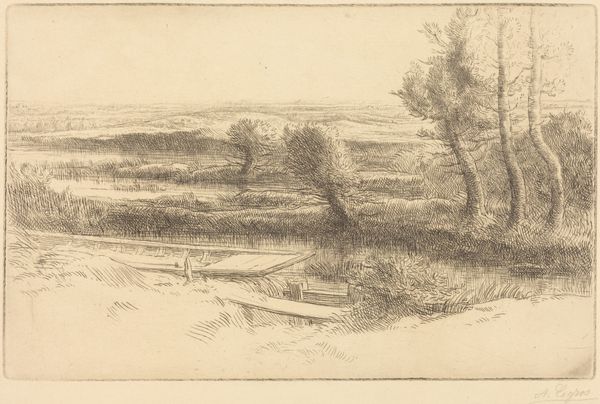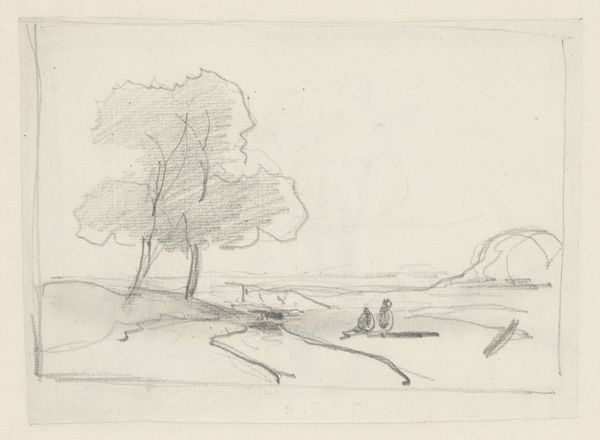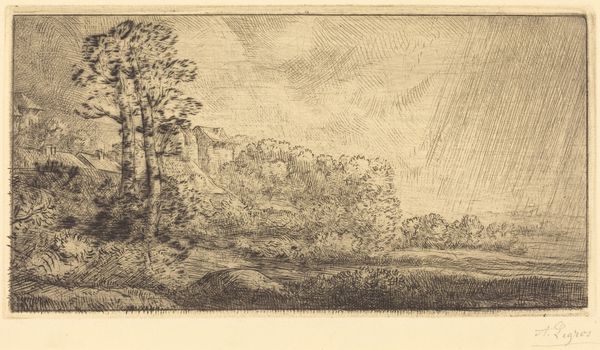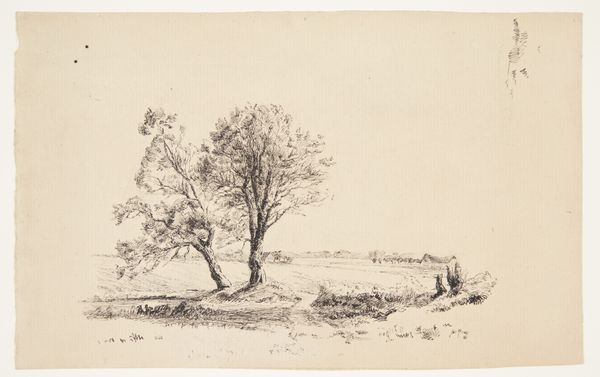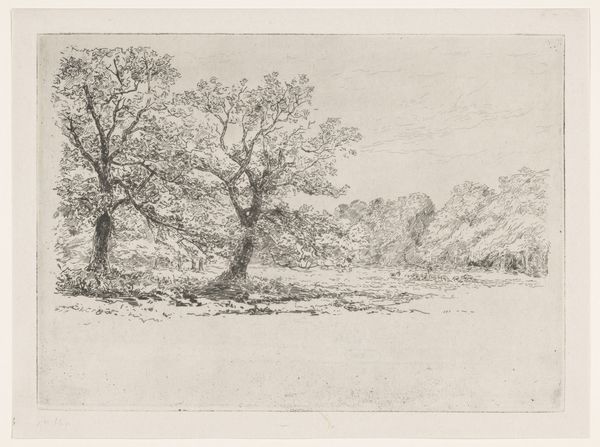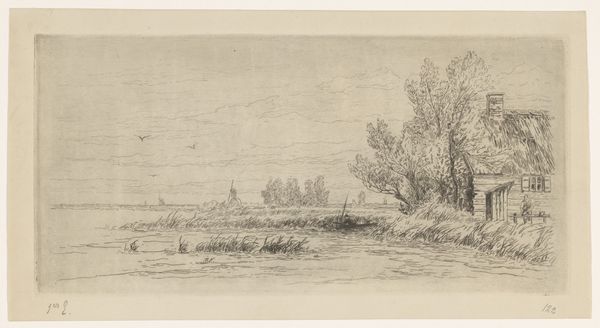
Copyright: National Gallery of Art: CC0 1.0
Editor: This is "Banks of the Morin," an etching by André Dunoyer de Segonzac, created in 1923. It's so delicate and wispy; the landscape feels still and quiet, almost melancholic. What stands out to you in this print? Curator: The starkness of the bare trees against the etched sky really captivates me. Trees are so frequently laden with symbolism – representing life, growth, the connection between heaven and earth. But here, stripped bare, they evoke a sense of winter, perhaps even a confrontation with mortality. The image asks us, "What remains when life sheds its outer layers?". Editor: That's interesting. I hadn't considered that reading. So you see the bare trees as symbolic of something beyond just the winter season? Curator: Absolutely. Consider how water is often a symbol for the subconscious or the flow of time. Notice how still the water is; it seems to mirror the quiet contemplation suggested by the trees. It invites us to look deeper within ourselves. Do you find any recurring motifs in Segonzac’s other works that might lend more weight to this reading? Editor: That makes me think about how frequently landscapes appeared after World War One – maybe as a search for solace or a longing for a simpler time, a visual expression of collective grief, almost. Curator: Precisely! This etching, with its somber beauty, connects us to a broader cultural mood and resonates with the experience of loss and reflection so prevalent in the interwar period. A landscape isn’t just a landscape, it holds cultural memory. Editor: I see what you mean. I’ll never look at a landscape quite the same way again. Thanks, this was very enlightening. Curator: It was a pleasure sharing perspectives! There’s always more to discover in a single image.
Comments
No comments
Be the first to comment and join the conversation on the ultimate creative platform.
